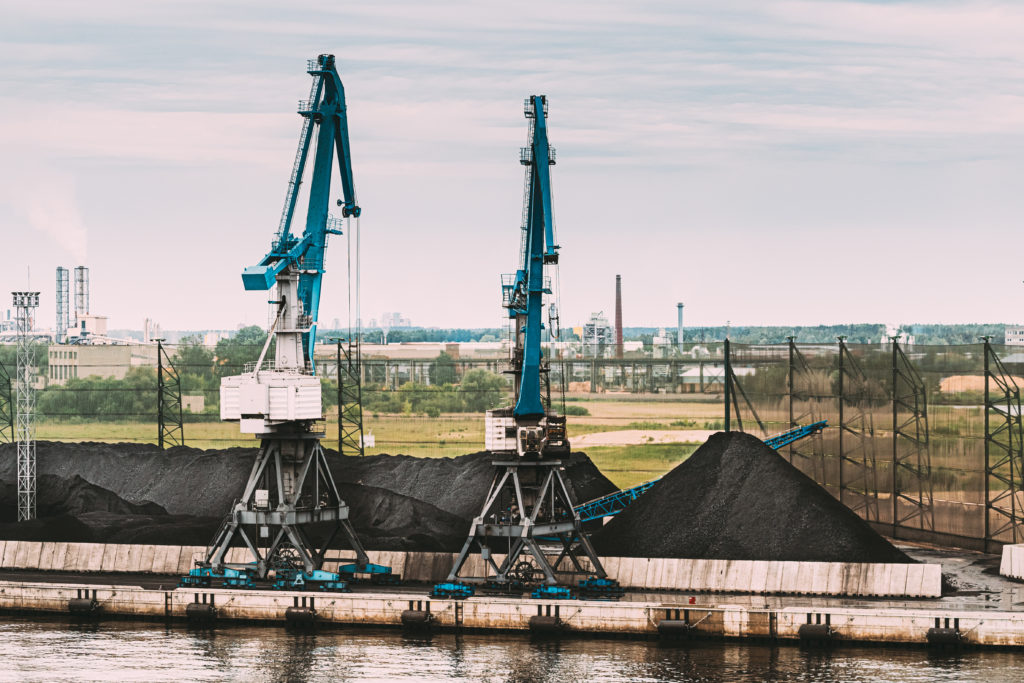Decarbonizing Coal to Secure a Sustainable Energy Future
The global energy transition is perhaps the biggest challenge of our era, but Oceanit is actively working on developing technologies to decarbonize current energy production methods. These technologies give us the time needed to forge a path to sustainable and renewable energies.
Our planet, Earth, is currently home to nearly 8 billion people. This population, which has increased from 7 billion in just 12 years, is on its upward trajectory. Estimates suggest that over the next 50 years, an additional 3 billion humans will call Earth their home. With this rise in the human population comes increased demands for life-sustaining resources such as food production, shelter, transportation, and more. All these necessities share a common requirement: a matching increase in the energy supply.

In an ideal Earth, our energy demands would be met entirely through clean, sustainable, and renewable resources. Society would harness energy from wind turbines, solar panels, geothermal power, and hydroelectric dams, transitioned away from fossil fuels. Climate-conscious officials, like those recently elected in Brazil and Australia, would have prioritized environmental concerns on a global scale.
However, the transition to cleaner energy has encountered unexpected setbacks in recent years, hampering efforts to create a cleaner environment. In fact, global coal power generation reached a twenty-year high in 2021, primarily driven by emerging economies and nations, as well as by armed conflicts in Eastern Europe and the Middle East. These trends indicate that coal consumption will continue to grow in the coming years, despite widespread knowledge of its harmful environmental impacts.
In 2015, countries convened at the Paris Accords to limit global warming to below 2 degrees Celsius this century, with an ideal maximum target of no more than 1.5 degrees Celsius. However, at the global climate summit COP26 in 2021, China and India refused to phase out coal usage. The consequences of this decision alone could result in a global temperature increase of 2.4-degree Celsius throughout the century, according to the Climate Action Tracker.
Countries such as China, Indonesia, India, and South Africa challenge policies regarding reducing reliance on coal due to their often abundant and affordable coal reserves. India’s coal minister, Pralhad Joshi, stated that coal would continue to play a significant role “until at least 2040 and beyond.” Coal plays a vital role in meeting these countries’ growing energy demands when boiled down to pure economics. Given the economic hardships resulting from the COVID-19 pandemic and the Russian-Ukraine war, these nations are unlikely to jeopardize their citizens’ well-being and economies solely to adhere to green ideologies.
On the opposite end of the green spectrum, countries like Germany have aspired to transition to greener energy sources. Germany has planned to phase out all coal energy sources, relying exclusively on solar and wind energy, with natural gas as a backup. It aimed to become the epicenter of “Green Europe” and achieve climate neutrality. However, the Russian-Ukraine war and the resulting disruption in natural gas deliveries shattered these goals. Like 80% of the world’s population, they have been forced to revert to hydrocarbons and fossil fuels to meet their energy needs.

The Russian-Ukraine War Took its Toll on Green Energy Progress
After the Russian invasion of Ukraine, two major pipelines supplying natural gas from Russia to Germany were destroyed. Germany, heavily reliant on energy for various industries, faced a crisis. Chancellor Olaf Scholz had no option but to turn to coal to ensure Germany’s well-being during the winter. Coal-fired plants were reactivated, including lignite (a low-rank form of coal) power plants, which emit more carbon dioxide than any other form of power generation.
Germany wasn’t the only country forced to change its energy goals during the Russia-Ukraine war. Poland also lifted a ban on lignite, allowing the use of coals for home heating. The surge in coal prices left citizens with limited options for heating their homes, resulting in increased pollution levels.
The war underlined Europe’s reliance on Russian oil and natural gas, emphasizing the challenge that renewable energy sources face in matching the energy density and affordability of fossil fuels. Governments are grappling to find backup resources in times when renewable energy generation fluctuates due to factors like wind or sunlight availability. In such times, coal consistently emerges as a steadfast option.
In 2022, coal consumption reached a record high, and according to the International Energy Agency, coal will remain the largest single source of carbon dioxide emissions in the global energy system by a significant margin. The use of coal is far from being phased out.

Considering the reluctance to let go of coal and the growing carbon footprint, it becomes crucial to find ways to limit pollution, control global warming, and work toward green goals. Three main avenues for pollution control emerge:
- Nations need to collaborate in reducing deforestation since trees play a vital role in absorbing harmful gases like carbon dioxide, sulfur dioxide, and carbon monoxide.
- Environmentally focused countries should set an example and implement pollution-control methods, inspiring developing countries and major polluters to raise their emissions reduction targets.
- Investments should be made in cleaner transportation, mining, and power production processes to mitigate the harmful impacts of burning fossil fuels, making their use less polluting and more efficient while reducing emissions and temperature increases.
The pollutants from coal combustion have significantly decreased over the past few decades thanks to technological advancements. Modernized coal plants using high-efficiency technology have substantially reduced pollutants that harm human health, such as carbon monoxide, lead, sulfur dioxide, nitrogen oxides, ground-level ozone, and particulate matter.
Our Chance to Influence How We Produce, Consume, and Manage Energy
The current impact of energy production methods on the planet necessitates action. However, for Oceanit’s HeatX team, it presents an opportunity for us to improve existing methods and shape the future of energy production, consumption, and management. This allows us to create a greener world through feasible methods for everyone. As a team, we are taking decisive action to make a difference. With our EDGE initiative (Energy Decarbonization for the Global Environment), we aim to transform the energy sector and address the impact of climate change on humans, society, and the planet.
Through EDGE, we can leverage creative and disruptive ideas related to efficiency, renewables, carbon sequestration, and more. Our goal is to create a world powered by clean energy, sustainable food and agriculture, eco-friendly transportation, waste and materials recycling, and a resilient ecosystem. Our products, such as HeatX®, reduce CO2 emissions by improving power generation efficiency, resulting in a significant decrease in carbon emissions without necessitating a shift away from existing power generation operations and equipment. In fact, HeatX has proven to improve power generations cycles by up to 7%, vastly improving the economics and emissions levels of current energy infrastructure.
The EDGE initiative and HeatX represent an opportunity to revolutionize the global energy supply for the 8 billion residents of our planet. Despite the challenges posed by the pandemic, war, and the return to coal, these initiatives offer a pathway to meet the targets set in the 2015 Paris Agreement. By harnessing technological advancements, we can create healthier solutions to meet the ever-growing energy demands and lead the world toward a greener future. To learn more about Oceanit and our efforts to promote a greener world, visit us here.



